Asylum seekers and refugees: What you need to know
- Published
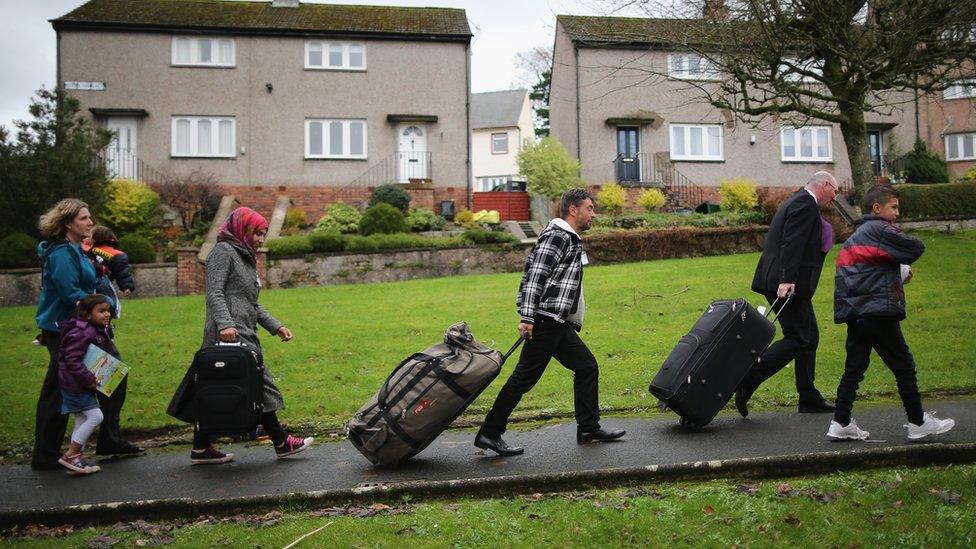
Syrian families have been resettled in the UK, including on the Isle of Bute
There has been a decrease in the proportion of Britons that believe the UK should accept more refugees, a poll commissioned by BBC Local Radio suggests.
About 24% of those surveyed by ComRes said Britain should take more refugees, compared to 40% when asked four months ago at the height of an international outcry over the image of a young Syrian boy lying dead on a beach.
BBC News looks at the numbers behind the asylum and refugee debate.
By how much are asylum applications increasing?
There were some 29,000 applications for asylum in the UK last year, the highest number in a decade.
Total applications for asylum rose by 4,700 between September 2014 and September 2015 compared with the year before. It was the largest number since 2005, when there were 30,314.
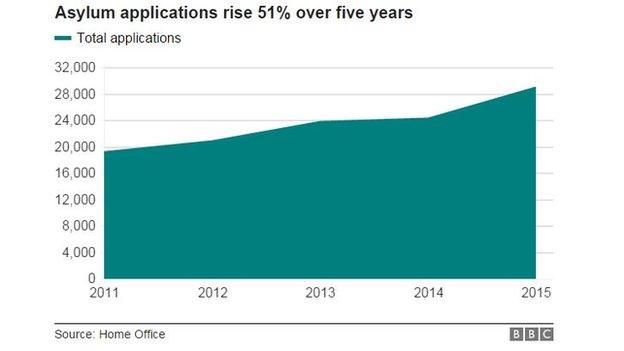
How many applications are refused?
In 2011, about two-thirds of all asylum applications were refused at the initial decision stage, although applicants have the right to appeal. By September 2015, 59% of initial decisions were refusals.

How many Syrian refugees are in the UK?
In December, Prime Minister David Cameron said about 1,000 people from Syria had arrived in the UK to be resettled as part of a pledge to accept 20,000 refugees.
The PM has also faced calls to prioritise children who have been separated from their families as a result of the war in Syria, conflicts in Iraq and Afghanistan and large-scale migration from Eritrea.
The UK will accept more unaccompanied child refugees from Syria, but the government has not said how many and the PM has said accepting as many as 3,000 - the number campaigners say should be resettled - might spur more refugees to risk "lethal" journeys.
The Department for Communities and Local Government said 55 councils across the UK, external out of a total of 433 had pledged to help.
There are different ways in which people are counted. Some come as asylum seekers, but others come via resettlement schemes.
Between March 2014 and September last year, 252 Syrians were "resettled" in the UK under the Vulnerable Persons Relocation Scheme. This is in addition to those who were granted asylum, are waiting for a decision or appealing against a refusal.
New arrivals land at locations across the UK. On one day in November 2015, about 100 refugees arrived at Glasgow Airport. Some of the families have been settled on the Isle of Bute in the Firth of Clyde.
And between early 2011 and September 2015 the UK granted 5,465 requests for asylum from Syrians at the initial decision stage. It refused 1,114 applications over the same period. There were 1,155 cases pending at the end of September 2015.
There were 173 appeals allowed between 2011 and 2014, the latest year for which figures are available, and 238 appeals dismissed.
Syrian refugees in the UK
20,000
will be resettled in the UK by 2020
1,000
arrived by the end of 2015
-
5,465 asylum applications granted between 2011 and September 2015
-
1,114 applications refused
-
173 appeals allowed between 2011 and the end of 2014
-
238 appeals dismissed
What is the difference between asylum and resettlement?
To request asylum the applicant must be in the UK. The Vulnerable Persons Relocation Scheme allows Syrian refugees who cannot make the journey to be resettled. It is aimed at those who are at the "greatest risk", external and need to be evacuated.
Resettlement gives people access to healthcare, education and employment. Asylum seekers are not allowed to work while their application is considered. They are assigned housing and given £36.95 a week, external each for food, clothing and toiletries.
Where are asylum seekers living?
The number of "supported" asylum seekers (those awaiting a decision and receiving housing and financial support) in the UK increased from 27,815 in the third quarter of 2014 to 31,896 in the third quarter of 2015.
North-west England has the largest share - 7,916 - compared with just 471 in the South East. These figures include asylum seekers from all countries.
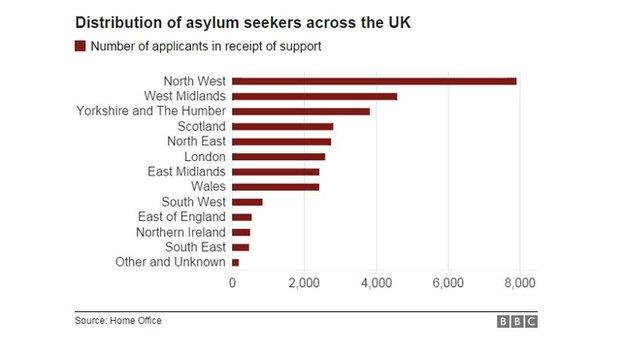

Glasgow has by far the largest number of supported asylum seekers in the UK, with 2,769, a rise of 207 on the year before. In England, it is Liverpool that has the most, with 1,513. However, by head of population it is Middlesbrough that has the most.

The government estimates that the cost of supporting asylum seekers, external whose claim had yet to be finally determined, or whose appeal result was pending, came to about £100m in 2014-15.
What are the ages and genders of Syrian asylum seekers?
Figures from 2014 show there were 2,025 applications from Syrians for asylum. Of those, 1,716 were male and 309 were female. The largest group was men aged 25 to 29.
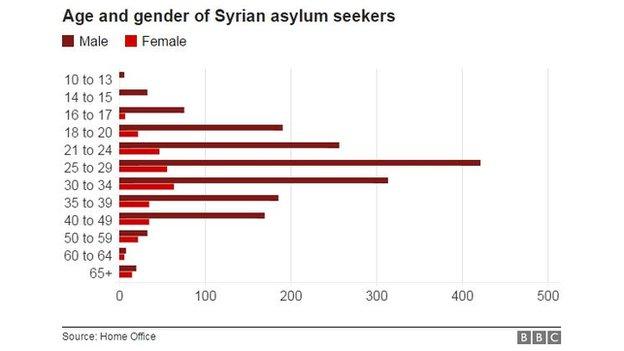
How many unaccompanied children are there?
There were 2,564 unaccompanied asylum-seeking children in the year ending September 2015, a 50% rise on the year before, when there were 1,712.
The government classes an unaccompanied asylum-seeking child as someone under 18, or who appears to be that age but does not have the documentary evidence, applying for asylum in his or her own right with no relative or guardian in the UK.
Of the Syrian applicants, the figures show there were 54 unaccompanied children claiming asylum in the three months to September 2015. Of those, 52 were male, 42 of them either proved or believed to be between 16 and 17 years old.
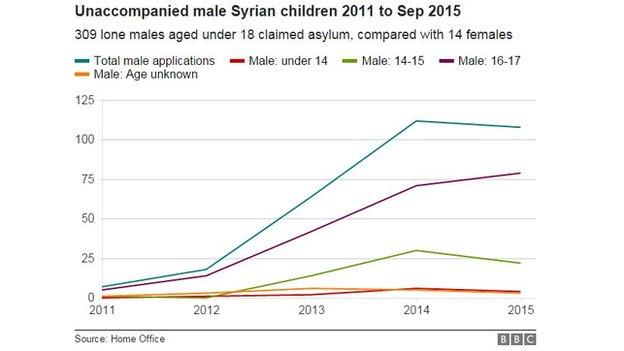
In the three months to September 2015, seven Syrian applicants' ages were disputed. Four disputes were resolved with three found to have been over 18 years old.
Who else is claiming asylum?
While refugees from Syria are high on the political and news agenda because of the civil war in their country, it is people from Eritrea who made up the largest number of people seeking asylum by nationality. However, 61% of Eritreans seeking asylum were granted asylum, compared with 87% of Syrian applicants.
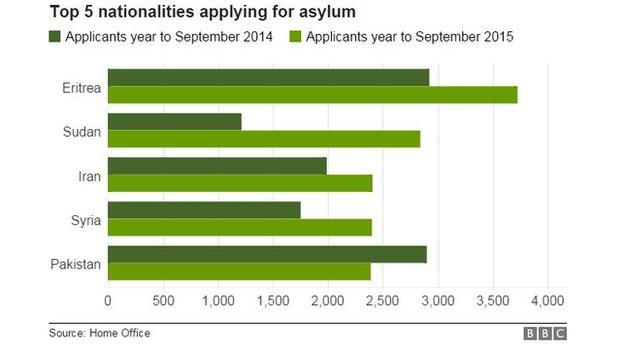
- Published23 October 2015
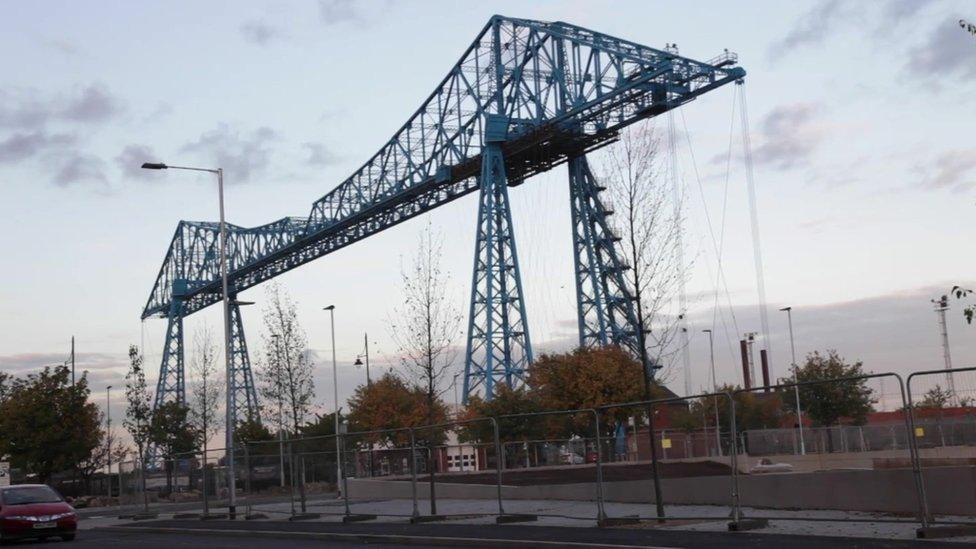
- Published4 February 2016
